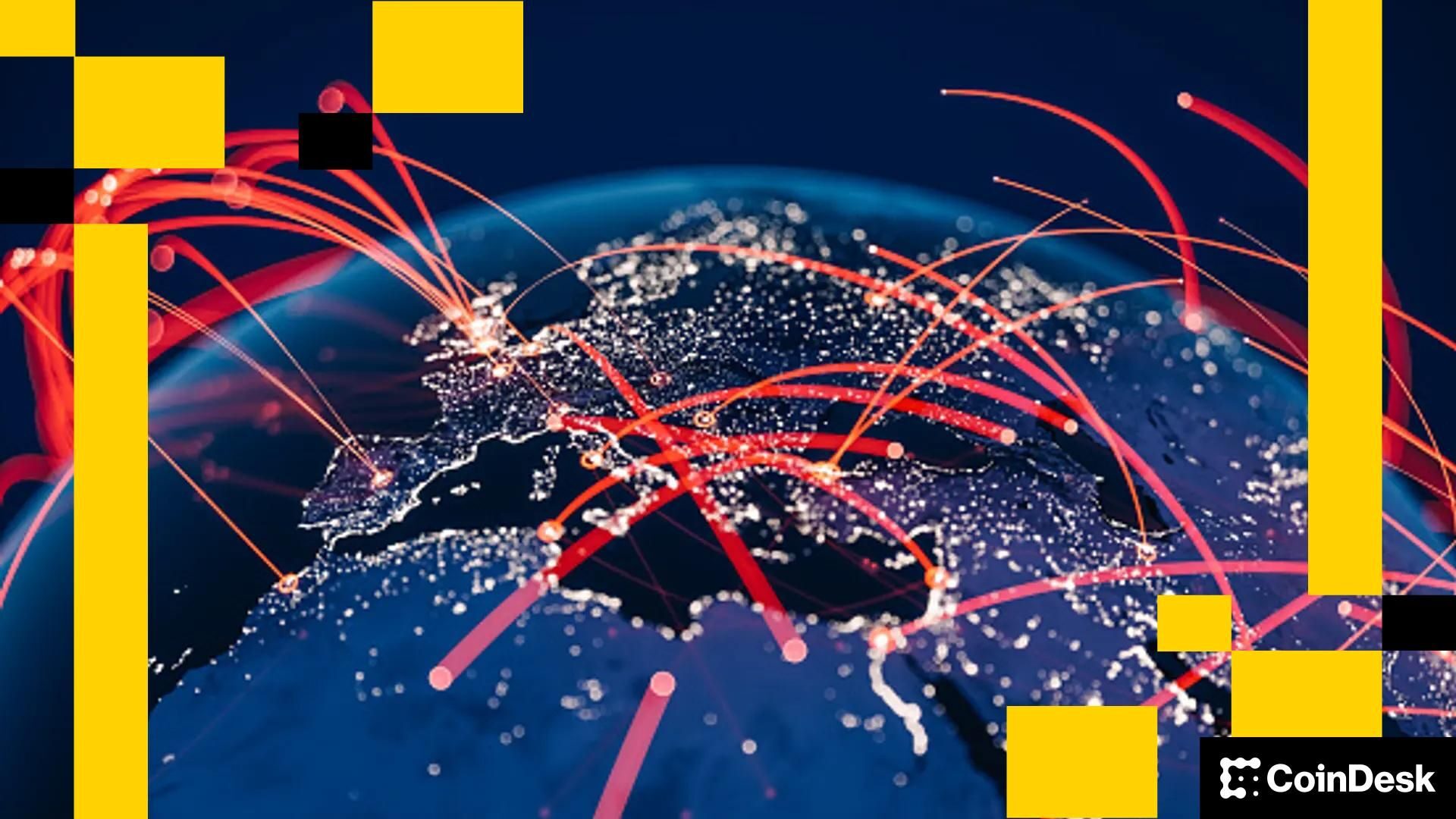DeFi Set to Challenge TradFi With $2T in Tokenized Assets by 2028: Standard Chartered
The bank said the 2025 stablecoin boom is fueling a self-sustaining wave of DeFi growth, and it forecasted $2 trillion in tokenized real-world assets by 2028.
By Will Canny, AI Boost
Updated Oct 30, 2025, 11:12 a.m. Published Oct 30, 2025, 11:12 a.m.

- Standard Chartered said decentralized finance (DeFi) is rapidly disrupting traditional finance, driven by the 2025 stablecoin boom.
- The bank predicted that tokenized real-world assets will hit $2 trillion by 2028, matching the stablecoin market size.
- It sees a self-reinforcing DeFi growth cycle, with U.S. regulatory delays posing the main risk.
Investment bank Standard Chartered (STAN) says decentralized finance (DeFi) is emerging as a powerful alternative to traditional finance, which relies on centralized systems run by trusted authorities like central banks.
The bank forecasted that by the end of 2028, non-stablecoin tokenized assets will reach a market capitalization of $2 trillion, up from $35 billion today, matching the expected size of the stablecoin market.
STORY CONTINUES BELOW
Tokenized money-market funds and listed equities could each account for roughly $750 billion, with funds, private equity, commodities, corporate debt and real estate making up the remainder, the bank said in the Thursday report.
DeFi, built on blockchain technology, removes the need for a central authority and instead operates on transparency, accessibility and code-based trust, wrote Geoff Kendrick, head of digital assets research at Standard Chartered.
According to Kendrick, the 2025 boom in stablecoins has accelerated DeFi’s shift from a niche crypto-native activity to a mainstream financial force, enabling non-banks to handle payments and savings once dominated by traditional institutions.
The widespread use of stablecoins has increased awareness in developed markets and injected on-chain liquidity that fuels further DeFi innovation, particularly in lending and borrowing, the report said.
Stablecoins are cryptocurrencies whose value is tied to another asset, such as the U.S. dollar or gold. They play a major role in cryptocurrency markets, providing a payment infrastructure, and are also used to transfer money internationally
Kendrick argued that this liquidity and growth in DeFi banking are laying the groundwork for an explosion in tokenized real-world assets (RWA).
Standard Chartered sees this as the start of a self-reinforcing cycle: liquidity creates new products, which in turn attract more liquidity. The main risk, the report noted, is if the United States fails to deliver regulatory clarity before the 2026 midterm elections, though that is not its base case.
Read more: Wall Street Bank Citi Sees Stablecoins Powering Crypto’s Next Growth Phase
AI Disclaimer: Parts of this article were generated with the assistance from AI tools and reviewed by our editorial team to ensure accuracy and adherence to our standards. For more information, see CoinDesk’s full AI Policy.
More For You
Oct 16, 2025

Stablecoin payment volumes have grown to $19.4B year-to-date in 2025. OwlTing aims to capture this market by developing payment infrastructure that processes transactions in seconds for fractions of a cent.
More For You
By Will Canny, AI Boost|Edited by Sheldon Reback
12 minutes ago

USDC leapfrogged USDT in onchain activity as regulatory clarity pushes investors toward transparent and compliant stablecoins.
What to know:
- JPMorgan said Circle Internet’s USDC overtook Tether’s USDT in onchain activity as investors favored regulated, transparent stablecoins.
- USDC’s market cap jumped 72% this year to $74 billion, more than double USDT’s 32% rise, driven by MiCA compliance and institutional adoption.
- While USDT still leads in emerging markets, JPMorgan said USDC’s regulatory model could set the standard for global stablecoin growth.
-
Back to menu
Prices
-
Back to menu
-
Back to menu
Indices -
Back to menu
Research
-
Back to menu
Consensus 2026 -
Back to menu
Sponsored
-
Back to menu
Videos -
Back to menu
-
Back to menu
-
Back to menu
Webinars
Select Language






